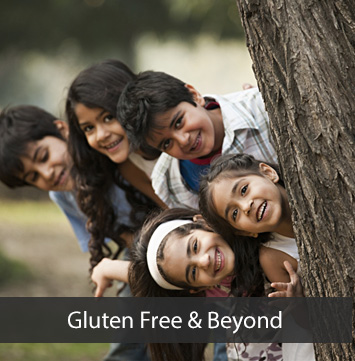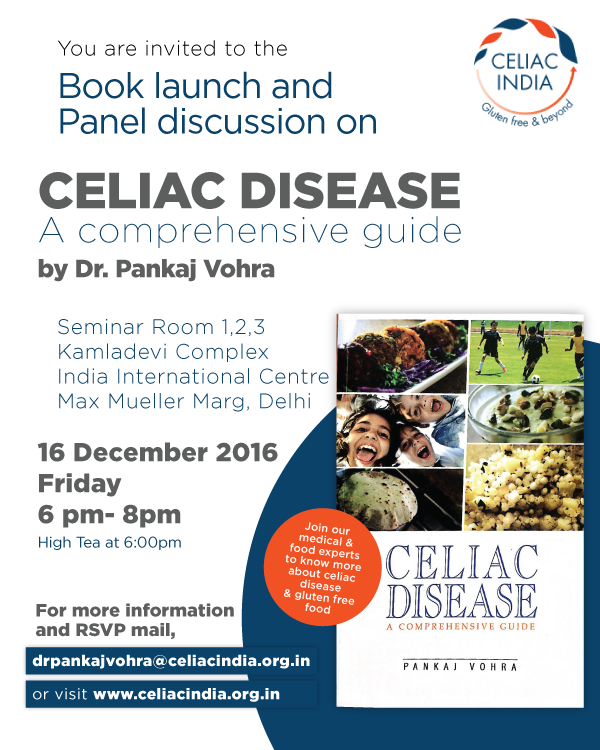Patient experience
Parents of a 10 year old girl who was diagnosed with celiac disease at the age of 3 years
Symptoms
By the time our daughter turned three, she was not doing as well as we- the parents- thought she should. Her appetite was poor, and she constantly complained of stomach discomfort and bloating. Her stool was bulky and greasy. This prompted a detailed discussion with her doctors.
Most of the treatment before she was diagnosed focused on the usual- small frequent meals, finding foods she liked, and carminatives like gripe water.
Diagnosis and endoscopy experience
Fortunately, our daughter was diagnosed when she was around three. Subjecting her to anesthesia was a difficult decision, especially for the mother. However, considering that implications of the diagnosis were lifelong abstinence from gluten-containing products, we had to get it done. Looking back, we need not have been so scared. We tried to comfort our daughter as much as we could before and after the procedure, and she only barely remembers the experience now.
Initial reaction
We initially thought it was very unfair to our daughter, as most of her favorite foods would now be unavailable to her. She had some difficulty understanding it, too, and wondered why there was no medicine for it. Gradually she cultivated a taste for what she could have, and has shown unexpected strength in staying away from foods suspected to contain gluten.
In the beginning, there was a lot of advice from friends and family about alleged cures through unconventional means, but we decided to take a scientifically-informed view, a decision we have never regretted.
Recovery
Our daughter took a while to recover, about six months. Although she remains a frail child, she is growing and is bright and intelligent.
Adjustment and compliance
It was difficult for our daughter at first. For the initial years, the entire household became gluten free, making it easier for everybody. After diagnosis, our daughter was briefly eating even lesser than before, but we think that she was absorbing whatever was eating better and not suffering for it. Fortunately, choices for celiacs have broadened after she was diagnosed, and substitutes are now available. It is also no small consolation that she is not eating any unwholesome food.
We are careful about cross contamination and use a separate set of utensils to prepare and cook our daughter’s food. While serving, crockery used is the same as that for the rest of the family but put through the dishwasher.
At school or during a holiday too, we try to have a zero tolerance to gluten-containing foods. Whenever our daughter complains of bloating after food and after switching to a new brand of prepackaged gluten-free food, we suspect hidden gluten, and try to speak to manufacturers to discuss the preparation methods at length; we nevertheless try to convince our daughter to switch to another brand.
School experience
Our daughter’s lunchbox changed. It demands some innovation as texture of gluten-free food is different. The teachers have been sensitized and take care about steering gluten-containing foods away from her during school picnics and such like. She continues to share her food with her classmates so they know it’s as good as regular food, but doesn’t accept their food. They seem to understand.
Our daughter’s food is now stuff like nuts, sweet roti made from alternate flours with potato or other vegetable, a juice and cookies.
Dining out
We have sensitized our favorite restaurants so that they now serve separately cooked snacks without marinades. We have a detailed chat with the chef before ordering, take some backup ready to eat food when going to a new place, increase her intake of bananas etc.
We travel with the ingredients when traveling and do the cooking ourselves or closely supervise it.
The main limitations
Mostly while eating out – not enough gluten-free instant foods and seasonings and widespread lack of gluten awareness in food establishments.
Message for a new celiac/parent
Don’t despair. If your child stays off gluten, he/she will be eating healthier and fresher food. Choice on the shelves is expanding. Celiac children are often sensitive and need careful emotional handling. They can become anxious when stressed, and this messes up their digestion. The child needs to know that his/her food is no burden, but a part of the regular menu at home. Don’t let gluten allergy get in the way of your child attempting or achieving new things. Don’t also let the child use it as an excuse to over-snack. Keep in touch with the teachers and other caregivers to ensure they always remember. Beware of hidden gluten- it can be anywhere, not just in the most obvious suspect foods.
Message for food industry
Label your products, do so conscientiously. There are millions of celiacs in India who deserve safe foods, and who can be your brand ambassadors.
Message for pharmaceutical industry, food industry, doctors
Organize. Gluten content of medicines needs to be displayed clearly. All process certifications need to be declared. There is a case for lower duties on import of gluten-free foods and medicines and incentives for manufacturing of such products in India. These demand policy responses that can be enabled and hastened by better coordination among stakeholders.


